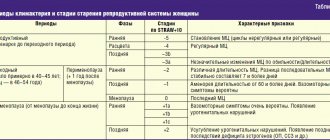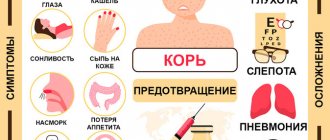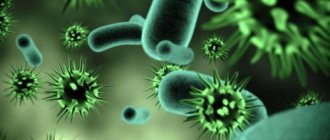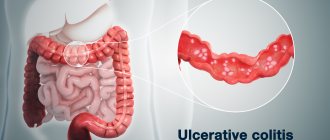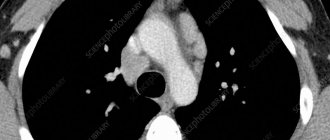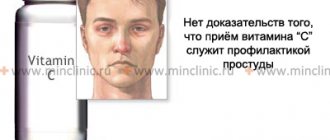What it is
Scarlet fever is an infectious disease caused by pathogenic bacteria - pyogenic streptococci. They provoke local inflammatory changes in the tonsils and pharynx area. Also, this group of microorganisms, during their life activity, releases toxic substances (toxins) into the blood, the most powerful of which is erythrogenic (scarlet fever) toxin.
How dangerous is streptococcal toxin?
The toxin leads to pathological changes in all organs, including the skin and mucous membranes, small vessels dilate, which causes the appearance of a characteristic rash. There is a disruption of the keratinization processes in the surface layer of the skin (epidermis) - the skin is severely flaky and flakes off. The toxin also damages red blood cells and other cells, causing fever, weakness and other symptoms of toxicity.
Streptococci can also cause serious allergic and autoimmune lesions caused by an excessive reaction of the immune system to scarlet fever toxin. As a result, the heart and kidneys are affected, and a disease called acute rheumatic fever develops.
How does infection occur?
They become infected with streptococcus through airborne droplets and household contact. Experts believe that the main method of infection is the spread of the pathogen through the air along with drops of saliva from an infected person. Healthy people inhale an aerosol containing microorganisms. Infected saliva from an infected person is scattered over a distance of up to one and a half meters.
The patient releases a large amount of the pathogen when coughing, sneezing, or talking into the environment. When these bacteria come into contact with food, alimentary transmission is possible. More often, people who have close contact with the source of infection become infected with scarlet fever.
The entry gate for the penetration of the pathogen into the body is the mucous membrane of the nasopharynx, pharynx, and less often the genital organs. Sometimes the pathogen enters the body through damaged skin. In the zone of bacterial invasion, a local infectious focus with typical necrotic manifestations appears.
Microorganisms multiply in it and release toxins into the blood, which contribute to the development of intoxication. The presence of this toxic substance in the bloodstream causes capillaries to dilate. On the skin this is manifested by the formation of a specific rash.
Gradually, the body develops antitoxic immunity, which helps the intoxication subside. Therefore, the rash disappears over time. Sometimes the pathogens themselves enter the bloodstream directly. This leads to damage to other organs and tissues, these include:
- lymph nodes;
- meninges;
- temporal bone tissue;
- hearing aid and others.
They develop purulent-necrotic inflammation.
Epidemiology
Scarlet fever is currently a rare disease, but it is found everywhere. The source of infection can only be a person.
The disease is called a childhood infection, along with whooping cough, measles, rubella, mumps and chickenpox. These infections are typical mainly for children of preschool and primary school age, since during this period of life they first find themselves in large children's groups, where they can meet a sick or hidden bacteria carrier. In adulthood, the disease is much less common.
From infection to the first symptoms it takes an average of 2 to 7 days4. The peak incidence is observed in the autumn-winter period.
Cause of the disease
The direct cause of the disease is the bacteria Streptococcus pyogenes group A, which is also the causative agent of simple sore throat (pharyngitis), superficial skin infections (impetigo), erysipelas and cellulitis. The pathogen is transmitted primarily by airborne droplets from a patient or a bacteria carrier. Infection by contact through various objects is unlikely.
After recovery (even after an asymptomatic course of the disease), as a rule, stable immunity is formed. However, occasionally the infection can still recur.
Is it possible to get scarlet fever again?
Can. The reason for the recurrence of the disease is as follows. During the infectious process, 2 types of immunity are developed - antitoxic and antimicrobial. The first is effective against toxins of any subtypes of group A streptococci, while the second is active only against a specific subtype of a given type of bacteria. This explains the recurrent disease caused by a new subtype of the pathogen. It has a milder course.
Is it possible to bathe a child?
Washing during scarlet fever is not prohibited. On the contrary, children should be bathed, as this will reduce itching of the skin and prevent scratching of the rash.
However, it is important to follow some rules:
- The water in the bath should not be too hot or very cool.
- if the child has a fever, the bath is replaced by wiping.
- The skin should not be rubbed with a washcloth or sponge.
- To wash off soap suds, instead of a shower, it is better to douche from a ladle.
- It is not recommended to dry your child with a towel after bathing. It is better to blot the water by wrapping the baby in a sheet or diaper.
Symptoms of scarlet fever
A bright red tongue is one of the most characteristic symptoms of scarlet fever.
Photo: SyntGrisha / (Creative Commons Attribution-Share Alike 4.0 International license) Scarlet fever manifests itself with characteristic symptoms that make it easy to establish a diagnosis. The following ones stand out:
- Intoxication syndrome: high body temperature (38–39°C), general weakness, headache, chills, nausea and vomiting, in severe cases - impaired consciousness.
- The so-called “flaming” throat. Bright red color of the mucous membrane of the pharynx and tonsils with clear boundaries.
- "Raspberry" tongue. In addition to the pharynx, the tongue has a bright red color. At the beginning of the disease, it is covered with a whitish coating, which is peeled off and exposes the burgundy-red surface of the tongue with clearly visible white dots - inflamed papillae of the tongue.
- Severe pain when swallowing. Caused by inflammation of the tonsils. When examining them, purulent plugs are visible, located in the recesses - crypts.
- Regional lymphadenitis. Often with scarlet fever, the submandibular lymph nodes become inflamed, which is reflected in an increase in their size and the appearance of pain when palpated.
- Red (pink) pinpoint rash. It occurs in the first two days of the disease on the face, neck and upper body, and later spreads to the entire surface of the body. The rash is often concentrated in the folds of the arms and legs, in the lower abdomen, on the sides of the body and in natural skin folds.
- Peeling of the skin. It begins after the rash subsides in the second week of illness. The nature of peeling differs depending on the location: on the body, as a rule, the scales are small, and on the palms and soles they are large.
- Filatov's symptom. Redness of the forehead, cheeks and temples, while the area of the nasolabial triangle remains unaffected and therefore appears pale.
- White dermographism. When passed over the skin with a hard, blunt object, white marks are left that last for quite a long time.
If you notice these symptoms, you must exclude contact with other people and consult a doctor. In case of high temperature (under 40°C), severe vomiting, or convulsions, it is imperative to call an ambulance. If a patient with scarlet fever is identified, quarantine is imposed. Therefore, it is necessary to notify the educational/working organization about the emerging disease.
Classification and stages of the disease
In Russia, the disease is usually classified according to symptoms, severity and nature of the course (see table below).
Table 1. Classification of scarlet fever
| By typicality of symptoms |
|
| By severity |
|
| According to the nature of the flow |
|
*Atypical forms are relatively rare. With the erased version, the symptoms are very mild, the rash may be completely absent, and the disease quickly regresses within a few days.
Extrapharyngeal variants are characterized by the absence of pharyngitis, typical of scarlet fever. In these cases, the “gateway” of infection becomes, for example, wound and burn surfaces.
Intensified (or aggravated) forms are characterized by a severe course with the development of bleeding, toxic shock and are the most severe variants of the disease.
Features of the disease in adults
In adults, the infection is usually more severe, with severe fever and convulsions. Diagnosis also causes difficulties: usually the doctor does not expect to see scarlet fever in an adult.
Scarlet fever in young children
In children under one year of age, infection is less common. Quite often the disease is complicated by pneumonia, bronchitis, otitis media and other pathologies that increase the scope of treatment.
Scarlet fever in pregnant women
Scarlet fever during pregnancy can cause miscarriages, as well as severe streptococcal postpartum infections in the mother, which are difficult to treat. The main difficulty is due to the fact that during pregnancy the use of antibacterial drugs is limited.
Staging
The infection occurs according to certain patterns. So, they talk about four main periods or stages of the disease:
- Incubation period. The time that passes from infection to the appearance of the first symptoms, that is, the period of active reproduction of bacteria. On average it lasts 2–4 days.
- Initial period. This is the period of time from the appearance of the first symptoms to the appearance of the rash. This period is characterized by the symptoms of intoxication that we have already discussed, a “flaming” pharynx, inflammation of the tonsils and submandibular lymph nodes. This period lasts from several hours to 2 days.
- Rash period. It is characterized by the appearance of a rash in the first 2 days of the disease. While initially bright, the rash fades by 3–4 days of infection. During this period, Filatov’s symptom is observed, later - “crimson” tongue and white dermographism.
- Recovery period. It begins from the 2nd week of the disease, this stage is characterized by peeling of the skin. Specifically large-plate peeling on the palms and soles. During this period, the patient is no longer contagious.
Complications of scarlet fever
Filatov's symptom (left) and a characteristic rash on the body are signs of scarlet fever.
Photo: Estreya at English (Creative Commons Attribution 2.5 Generic license) Complicated course of infection can be caused by toxic, septic and allergic complications. Moreover, the first two types are more often classified as early complications, while allergic ones are mainly regarded as late ones.
The toxic form is characterized by extreme manifestations of intoxication syndrome:
- temperature rise above 40°C;
- repeated vomiting;
- convulsions;
- disturbances of consciousness;
- bright, profuse rash with subcutaneous hemorrhages;
- ECG signs of toxic myocarditis;
- decreased blood pressure;
- (in some cases) death from toxic shock.
The septic form is distinguished by an overly pronounced inflammatory process of a purulent-necrotic nature:
- the tonsils, arches and base of the uvula are inflamed;
- inflammation in the lymph nodes (which can lead to necrosis of the tissues surrounding them);
- bronchitis;
- pneumonia;
- otitis;
- peritonsillar abscess (local accumulation of pus in the tonsil area);
- (in the absence of timely treatment) sepsis and death.
Important! Toxic and septic forms of scarlet fever, as a rule, develop in the absence or incorrectness of treatment. Early competent antibiotic therapy minimizes the risk of such complications.
Complications of the allergic form include:
- myocarditis;
- poststreptococcal glomerulonephritis;
- acute rheumatic fever;
- a number of other pathologies.
The causes of these complications are still the subject of debate. Most often, doctors are inclined to autoimmune disorders that are caused by one of the components of the streptococcal cell wall. Such complications are rarely fatal, but can lead to long-term consequences such as chronic damage to the heart and kidneys.
Diagnosis of scarlet fever
The doctor checks the patient's throat and tongue.
Then, to confirm the diagnosis, blood and an oropharyngeal swab are sent for analysis. Photo: freepik.com When making a diagnosis, doctors are guided by typical symptoms of the disease and a number of clinical and laboratory methods:
- Clinical blood test. The appearance of nonspecific signs of inflammation is characteristic: an increase in the number of leukocytes, an increase in the erythrocyte sedimentation rate (ESR).
- Culture of oropharyngeal swabs. The material collected from the surface of the pharynx is inoculated on special bacteriological media. After cultivation, the properties of the colonies grown on the media are studied and the pathogen is identified.
- Express diagnostic methods. They are based on searching for fragments of a microorganism in material collected from the surface of the pharynx using special reagents.
- A blood test to check for the presence of specific antibodies to streptococcus produced by the body. The study proves the presence of the pathogen in the body.
Instrumental research methods for scarlet fever
Typically, examining symptoms and laboratory tests is more than enough to make a diagnosis. In severe cases of the disease with damage to the heart and kidneys, doctors can resort to instrumental methods for studying them: ECG, ultrasound.
What additional examinations do I need to undergo?
Throat culture or rapid test
In typical cases, the diagnosis is made based on examination and does not require additional research. However, according to international recommendations, before prescribing antibiotics, the child is advised to do a throat culture for flora and sensitivity to antibiotics. Sowing on blood agar, provided proper preparation, is a very sensitive method - up to 95% probability of a correct result. It has only one drawback. You will have to wait 1-2 days for the results. Rapid tests have been developed for faster diagnosis. Their sensitivity is slightly lower. Ranges from 60 to 85%. However, the result can be obtained immediately and without delaying the start of treatment.
In order for a culture or rapid test to show a more accurate value, the child should be properly prepared for the analysis. It will be most effective to do the test in the morning before the baby has eaten, drunk or brushed his teeth. If the test is not done at home, but in a laboratory, it should also not be fed or watered at home. It is allowed to do the test or culture not in the morning, but at least 2 hours must pass from the next meal or drink. If the test is done independently at home, it is important for parents to strictly follow the attached instructions. And take a smear strictly from the surface of the tonsils, it is better from that part of them where the plaque is more abundant. This will increase credibility.
General blood analysis
A general analysis can also be quite informative. It will help the doctor distinguish scarlet fever from a viral infection or an allergic reaction with an unclear clinical picture, and promptly recognize complications.
If complications occur or are suspected, consultations with specialized specialists - ENT, cardiologist, nephrologist - may be necessary; or additional examinations - general urinalysis, biochemical blood test, x-ray, ultrasound, etc.
Treatment of scarlet fever
Most often, the doctor leaves the patient at home, prescribing him a course of antibiotics, anti-inflammatory drugs to reduce fever and vitamins.
Photo: ccaetano / Depositphotos Depending on the severity, treatment is carried out on an outpatient basis or in a hospital setting. Indications for hospitalization are:
- moderate to severe forms of infection;
- failure of outpatient treatment;
- immunity disorders;
- congenital malformations of the heart and blood vessels;
- the presence of other children in the family who have not had scarlet fever.
Important! Under no circumstances is it recommended to self-medicate. Only a pediatrician should determine in what conditions treatment should be carried out and what medications should be prescribed.
If the doctor considers that you can limit yourself to home treatment, you should not forget that the child needs to be provided with rest, plenty of fluids, and high-quality nutritious nutrition that meets the body’s needs for vitamins and microelements.
Drug treatment
Includes the use of various groups of drugs:
- Antibacterial drugs from the penicillin series, macrolides, cephalosporins. They are used to eliminate the pathogen - the cause of the disease. They are of paramount importance in drug therapy.
- Non-steroidal anti-inflammatory drugs: paracetamol, ibuprofen and others. They are used as a means to lower the temperature (at 38°C and above).
- Local antiseptics in the form of aerosols. Used as antimicrobial and anti-inflammatory agents for irrigation of the pharynx.
- Antihistamines and electrolyte solutions for infusion. Used as a means to reduce intoxication of the body.
Lifestyle of a child during illness
The infection weakens the baby, so he needs to be provided with bed rest, in a room without bright lights and loud sounds. Reduce stress levels as much as possible.
Despite the fact that in our society it is customary to feed sick children, in the case of scarlet fever it is better not to do this. It is necessary to give food little by little; all foods must be boiled and ground so that they are easy to swallow. Food should be warm, not hot. The diet excludes hot, salty and spicy foods that irritate the throat. As for the drinking regime, you need to drink a lot. It is better if it is an alkaline warm drink. The baby should have access to it around the clock. Dehydration must not be allowed. You need to drink fractionally, that is, sip at a time, but often.
It is not advisable to bathe your baby during scarlet fever, at least for the first 5-7 days. Temperature changes and unnecessary irritation will only intensify the appearance of the rash. It is also not worth treating the rash with anything.
Prognosis and prevention
The prognosis in the vast majority of cases is favorable. Most often, early complications can be successfully avoided thanks to timely antibiotic therapy.
Allergic complications after streptococcal infection are more difficult to eliminate. It has been established that incomplete treatment plays a significant role in this. Therefore, antibiotic therapy should not be stopped even if symptoms have disappeared. It is necessary to carry out the course to the end, leaving no chance for bacteria to “counter-offensive”.
The main areas of prevention are:
- isolation of the patient from the team;
- quarantine measures;
- reducing crowding and team size;
- high-quality disinfection regime.
Preventing infection presents some difficulties. This is due to the fact that the pathogen is very contagious and is transmitted by airborne droplets. And there is no vaccine for scarlet fever on the market yet.
Sick leave during quarantine
The procedure for social payments during quarantine for scarlet fever is regulated by clause 6 of Art. 6 of the law on compulsory social insurance No. 255-FZ. In accordance with the norms of this legislative act, the following may apply for opening a sick leave with payments:
- parents or other legal representatives of a child attending kindergarten for a period of 12 days after his recovery;
- parents or other legal representatives of a person suspended for 22 days due to the occurrence of a sore throat within seven days after the last case of scarlet fever in his kindergarten group;
- parents or legal representatives of children who cannot return to preschool due to announced restrictions.
Additional information
As for the issuance of sick leave to the patients themselves, as well as to their legal representatives, without taking into account quarantine restrictions for scarlet fever, this is regulated by clauses 1 and 5 of the same Article 6 of Federal Law No. 255.

